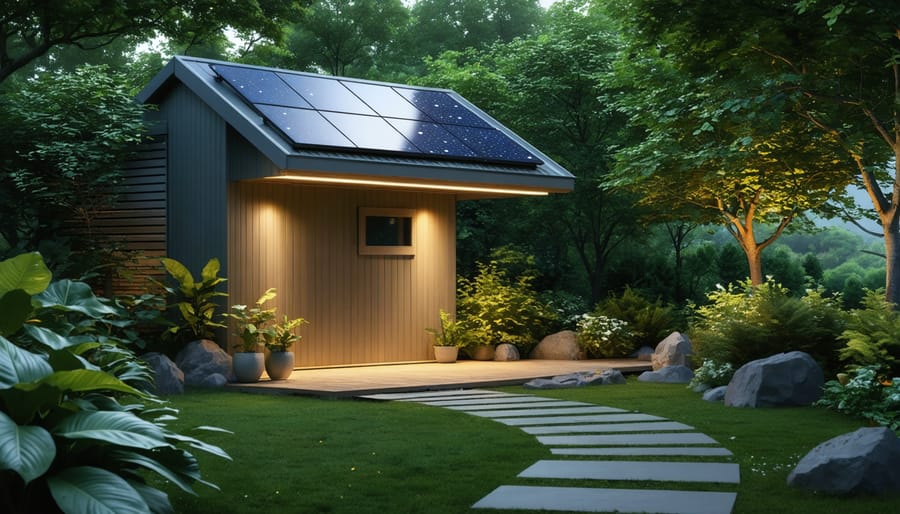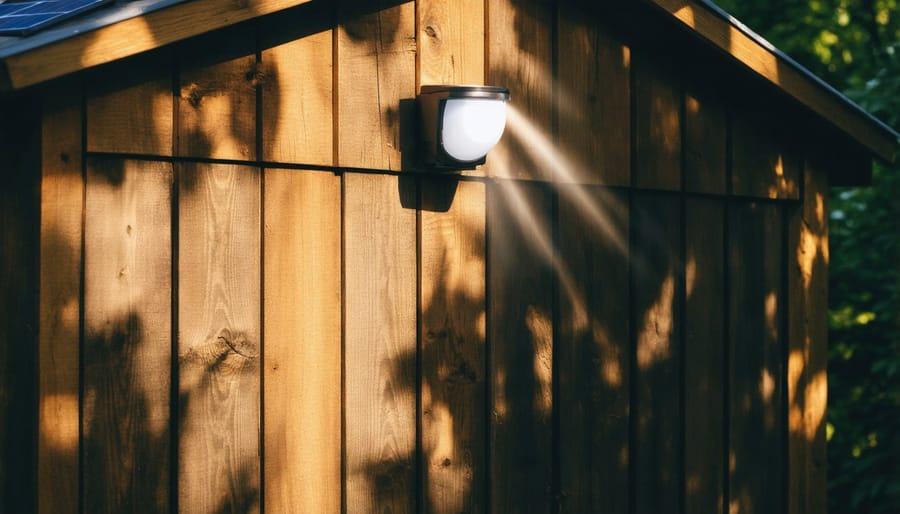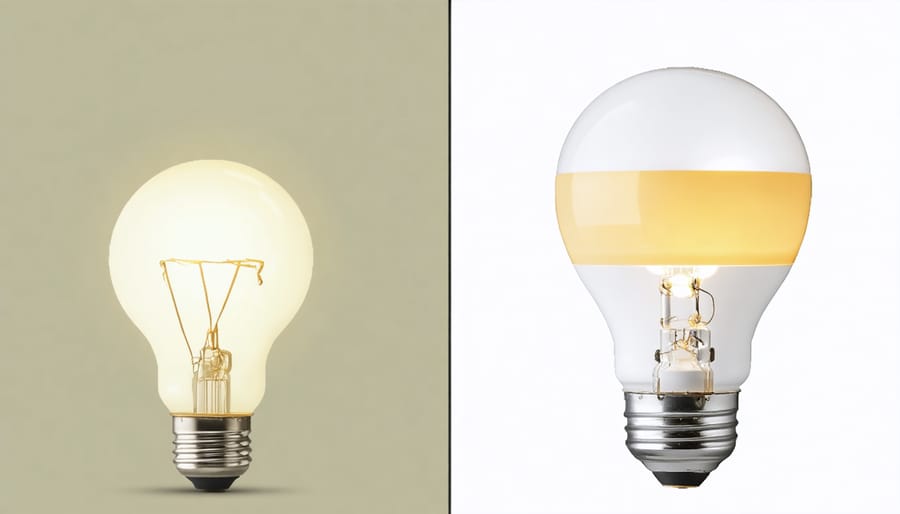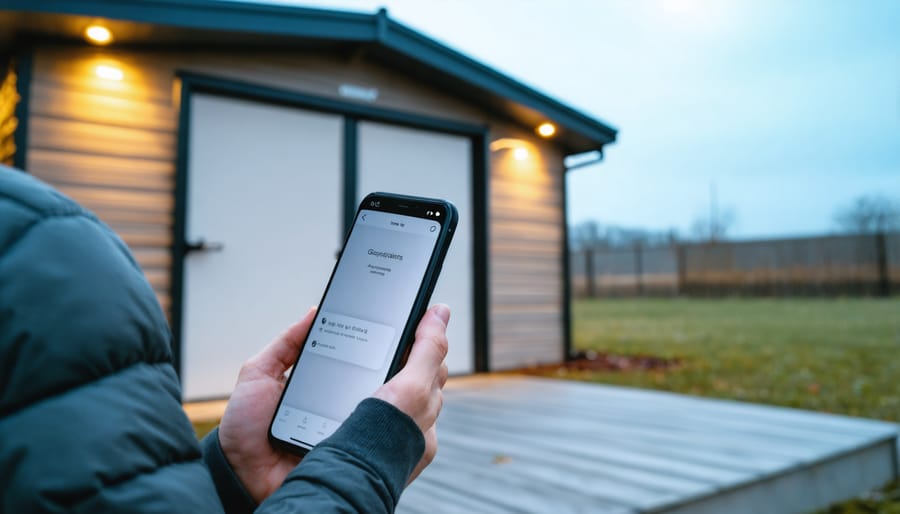Smart Solar Solutions That Make Your Shed Shine (Without Shocking Energy Bills)

Transform your shed’s exterior into a well-lit, secure space with strategically placed LED flood lights, motion sensors, and solar-powered fixtures. Modern outdoor lighting combines practical illumination with energy-saving upgrades for sheds, ensuring both functionality and efficiency. Position weatherproof fixtures above entry points, corners, and pathways to create safe, accessible storage even after sunset. Battery-powered options eliminate complex wiring needs, while smart lighting systems enable remote control through mobile devices, automatically adjusting to seasonal daylight changes. Proper outdoor lighting not only enhances security but also extends your shed’s usability into evening hours, transforming it from a basic storage space into a functional workshop or hobby area. Choose lighting fixtures rated for outdoor use, with at least IP65 weather resistance, to ensure long-lasting performance through all seasons.
Solar-Powered Lighting Options That Actually Work
Motion-Activated vs. Always-On Systems
When choosing solar lighting for your shed, you’ll need to decide between motion-activated and always-on systems – each offering distinct advantages for different situations. Motion-activated lights conserve energy by only illuminating when movement is detected, making them perfect for occasional nighttime visits to your shed. They’re also excellent deterrents against unwanted visitors, suddenly lighting up when someone approaches.
Always-on systems, while using more energy, provide consistent illumination from dusk till dawn. These are ideal if you frequently access your shed during evening hours or want to create ambient lighting in your yard. Some homeowners prefer using a combination of both: always-on lights for general illumination and motion sensors for brighter task lighting when needed.
Consider your typical usage patterns – if you rarely visit your shed after dark, motion sensors might be your best bet. However, if your shed doubles as a workshop or you want to highlight its architectural features, an always-on system could be worth the extra energy consumption. Many modern solar systems now offer adjustable settings, letting you switch between both modes as needed.

Installation Spots for Maximum Solar Gain
To maximize your solar-powered shed lighting, strategic placement is crucial. The south-facing side of your shed typically receives the most sunlight throughout the day, making it ideal for mounting solar panels or lights. If possible, position panels at a 30-45 degree angle to capture optimal sunlight, especially during winter months when the sun sits lower in the sky.
Avoid areas where trees, buildings, or other structures cast shadows during peak sunlight hours (usually 10 AM to 2 PM). Consider seasonal changes in foliage and sun position when choosing installation spots. For year-round effectiveness, mount lights higher on the shed’s exterior, keeping them clear of snow accumulation in winter and debris throughout the year.
Corner installations often work well, as they can capture light from multiple angles and provide broader illumination coverage. For motion-sensor lights, focus on high-traffic areas like doorways and pathways. Remember to keep panels and lights easily accessible for regular cleaning and maintenance, but high enough to prevent tampering or damage from yard equipment.

LED Solutions That Last (And Save)
Battery-Powered vs. Hardwired Systems
When it comes to powering your shed’s outdoor lighting, you’ll typically choose between battery-powered or hardwired solutions. Battery-powered systems offer excellent flexibility and easy installation, making them perfect for sheds without existing electrical connections. These systems often include solar-charging capabilities, which can significantly reduce running costs and maintenance needs.
Hardwired systems, while requiring initial professional installation (especially for insulated electric shed systems), provide consistent, reliable lighting regardless of weather conditions. They’re ideal for workshops or storage sheds that see frequent nighttime use. These systems can also support brighter lights and more extensive setups without worrying about battery life.
Consider your shed’s primary use when choosing between the two. If you need occasional lighting for brief visits, battery-powered options work well. For regular evening use or power-hungry applications, hardwired systems prove more cost-effective in the long run. Many homeowners actually combine both systems, using hardwired lights for primary illumination and battery-powered units as backup or supplementary lighting.
Smart Controls That Make Life Easier
App-Based Management Systems
Modern shed lighting has gone high-tech with smartphone-controlled systems that put illumination at your fingertips. Just like smart climate control solutions, these app-based systems offer convenience and enhanced functionality. Using your phone, you can adjust brightness levels, set schedules, and even change light colors if you’ve installed compatible fixtures. Many apps also include motion detection alerts and energy usage tracking, helping you monitor and optimize your lighting consumption. The real game-changer is the ability to control your shed lights remotely – perfect for those times when you’ve forgotten to turn them off or want to create the appearance of activity around your property while away.

Easy DIY Installation Tips
Installing eco-friendly lighting for your shed doesn’t have to be complicated. Start by mapping out your lighting needs and marking installation points with a pencil. For solar-powered lights, choose spots that receive plenty of direct sunlight during the day. Mount your solar panels at a 45-degree angle facing south for optimal exposure.
When installing battery-powered motion sensors, position them about 6-8 feet high and angle slightly downward for the best coverage. Use weatherproof mounting brackets and stainless-steel screws to prevent rust. If you’re running electrical wiring, always work with the power off and use outdoor-rated cables and waterproof junction boxes.
For simple stick-on LED lights, clean the surface thoroughly with alcohol before applying. Double-check that all connections are tight and sealed against moisture. Test your system before finalizing the installation, adjusting sensor angles and light positions as needed.
Remember to secure all cables with UV-resistant cable ties and protect any exposed wiring with conduit. For added safety, apply silicone sealant around mounting points to prevent water infiltration. These simple steps will ensure your shed lighting remains functional and efficient for years to come.
By choosing the right outdoor lighting for your shed, you’re not just enhancing security and functionality – you’re making a smart investment in your property. Remember to prioritize energy-efficient LED options, consider motion sensors to reduce unnecessary power usage, and select weather-resistant fixtures for longevity. With proper planning and installation, your shed lighting can be both eco-friendly and effective, providing years of reliable illumination while keeping your energy costs down. Make the switch to sustainable shed lighting today and enjoy the perfect blend of practicality and environmental responsibility.

